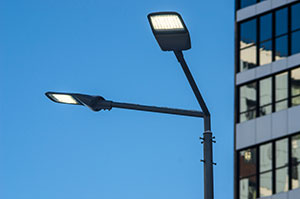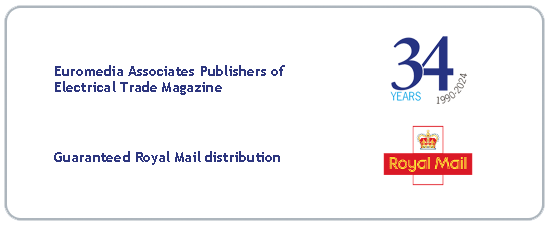The NEW ProtecWork Protective Clothing From Snickers

Fully accredited, advanced Protective Clothing for heat and flame, electrostatic and chemical risk environments from the UK’s leading workwear innovator. ProtecWork is a new collection of protective working clothes and accessories from Snickers Workwear, which has developed out of over 40 years leading the workwear industry – and through close consultation with users and employers in the railway and energy sectors around Europe. The market-leading risk-protection properties of the clothing are integral components of the extensive range of Base-, Mid- and Top-Layer garments for men and women that combine well with the Snickers Workwear hallmarks of best-in-class durability, comfort, ergonomics and fit. Fully accredited as appropriate to a variety of risk and weather conditions such as heat and flame, electrostatic, chemical and bad weather working environments, all the garments are manufactured from tailor-made fabrics designed to respond to the demands and risk factors of the conditions in which they’re worn. So with over 60 different garments and accessories to choose from, you can make sure you get the right protection, visibility, flexibility, comfort and durability. Check out the new Snickers Protective Clothing range to fit your workday and well-being on site. For more information on the new ProtecWork products, visit www.snickersworkwear.co.uk alternatively, call the Snickers Workwear Helpline on 01484 854788.
New study reveals the Most Ludicrous Health & Safety Rules

A recent study by Dickies Workwear has found a top 10 list of unexpected health and safety rules. It was found that more than 61% of participants experienced a ban on shorts on a construction site, even in the sweltering heat of summer. The workwear brand, established in 1922, asked and polled their loyal social media followers for the most ludicrous health and safety rules they had come across, and took to the masses to vote on which ones they had also experienced. Following an interesting range of results, Dickies Workwear made it their mission to myth bust some of the most dubious rules. Mark Tapper, Head of Ecommerce at Dickies Europe Ltd comments, “over the years we have seen the number of seemingly bizarre rules on sites increase for sure. However, in some occasions, these are perfectly legitimate policies, for example, rules on sleeves may be in place where high visibility is required to ensure the employees have the correct surface area of reflective material to comply with specific EN ISO regulations for the dangerous surroundings.” The Top 10 Most Ludicrous Health and Safety Rules – 1. The ban of shorts (even during summer) 61% of participants experienced a ban on shorts in their site/workplace in the past. Whether workers can wear shorts on a site depends on the site’s policy. If the site policy states that workers must not wear shorts to work, then it’s expected that everyone adheres to the ruling – even if in the sweltering heat of summer. 2. Must wash hands after toilet or risk removal from site 14% of participants said that they have been told to wash their hands after going to the toilet or risk removal from site/workplace. Perhaps one of the strangest responses, workers had to wash their hands after the use of the toilet or risk removal from site. (Dickies Workwear are unsure of how this is monitored, nor whose job it is to keep watch on the lavatory usage and hand cleanliness thereafter.) 3. Wearing a harness which isn’t attached to anything Across all industries planning to work at height, the regulation is a maximum of 4 feet before wearing a harness. In construction work, the threshold height is 6 feet above a lower level. Fall protection on scaffolding is required at 10 feet, although a twitter user offered up this rather ludicrous rule that they experienced often in the 90’s. 4. A ban of short sleeves 31% of participants have been banned from wearing short sleeves on site. In recent times, more and more construction sites and companies are adopting the “long sleeve PPE” safety policy. This generally refers to the requirement to have all members of the workforce wearing long sleeve shirts when working on site. 5. The ban on radios 63% of participants said that they’ve experienced a ban on listening to the radio on site. A highly debated rule in the trades industries, and whilst environment must be taken in to context (building site vs. domestic property), having a radio (or other devices) is now considered to be unsafe, given that it distracts the workers from the task at hand, which often involves them having to concentrate on doing the job properly and safely. 6. Hard Hats Aren’t Compulsory In the construction industry in the UK, 3% of workers sustain a work-related injury and 11% of these injuries are from being struck by an object. In fact, another 66,000 injuries are estimated to go unreported every year. While it isn’t 100% compulsory by law to wear a safety helmet on a construction site if there is no risk of head injuries, however, on most construction sites there are dangers so wearing hard hats are necessary. 7. The ban of heavy lifting According to the Health and Safety Executive (HSE), handling, lifting or carrying makes up 20% of non-fatal injuries to employees. These factors can create excessive stresses and strains on the body. This can cause immediate damage to muscles and tendons such as sprains and pains but can also lead to longer term or recurrent problems. Therefore, it’s in everyone’s best interest to not exceed weight restrictions. 8. The ban of stepladders and ladders It’s a common myth that stepladders and ladders are a health and safety risk. According to HSE this is a myth and stepladders and ladders are not banned, merely a precautionary measure. 9. The way hi-vis clothing is worn One of the respondents was not allowed onsite until his hi-vis vest was completely fastened at the front. According to HSE, around seven workers die and 93 are seriously injured annually by vehicles or mobile plant on construction sites. And just when you thought you’ve seen it all, perhaps not a legal regulation, but it must’ve been an enforced rule in this workplace… 10. Having to deal with bizarre client requests Perhaps not as much a rule as a standard protocol, but we’ve heard of the term “the client is always right” and so, especially when working in housing sites, it often happens that tenants like to get involved. Mark Tapper mentions, “If you’re unsure as to why a particular rule may be in place at your place of work I’d recommend speaking to the H&S team, as it is likely that there is a logical explanation.” For further information on the health and safety rules research conducted, please see Dickies Workwear’s full guide here.
PPE Workwear – Comfort and Safety Combined.

The Hultafors Group Adds Hellberg Safety PPE products to its premium brand portfolio for professional tradesmen and women. With over 50 years experience in the PPE industry, the Hellberg Safety specialist equipment includes highly advanced hearing protection products, face protection and communication solutions for personal protection on site. From face guards, helmets and passive hearing protection with up to 3 levels of protection from low to extreme noise, Hellberg also supply secure electronic hearing protectors to suit different work environments. Peter Dumigan, managing director of the Hultafors Group UK says: “Hellberg PPE products complement the Snickers Workwear and Solid Gear Safety Footwear product portfolios so well – in particular the newly launched Snickers Workwear ProtecWork Heat and Flame Protective Wear. The Hultafors Group now provides the UK market with an even more extensive range of EN-accredited, top quality premium brand products, ideally suited to protect the personal wellbeing and safety of the discerning professional tradesman and woman”. Getting information on the new Hellberg Safety PPE product range is easy – call the Hultafors Group UK Helpline on 01484 854788 or checkout the website www.hellbergsafety.com
As Dark Nights Draw In, Health & Safety Has To Be Priority

Visible changes highlight the brand’s ongoing commitment to industry safety ProGARM, the UK’s leading specialist in Arc Flash protection understands the need for clothing that is comfortable, warm and importantly visible during the winter months, the hardest time for workers in the electrical industry across the UK. While those across the UK at risk of an Arc Flash are already encouraged to wear full protective PPE throughout the year, workers crucially need to be very visible once dark mornings and afternoons become a daily occurrence. Yet highly visible Arc Flash resistant clothing is often disregarded in winter due to lack of flexibility and warmth. In addition to this, many workers don’t realise the many risks involved when working in a dimly lit location and the working rights they have when it comes to demands for more lighting. In fact, employers are required by law to look closely at lighting in the workplace to see what may cause harm or injury and should be aware of the following important points when it comes to lighting: Lighting must allow people to notice hazards Lighting must allow people to see properly and discriminate between colours Lighting must not result in excessive differences in illuminance within an area or between adjacent areas Lighting must be suitable to meet the special needs of individuals Working in areas that are not properly lit can be extremely dangerous since one incorrect move and an Arc Flash incident can be triggered. Pair this with incorrect clothing and a lack of knowledge surrounding which are the safest garments to wear and the result could be a life altering experience since an Arc Flash event is so serious that it could disable the casualty, effecting their ability to work for a long while afterwards and leave them with fatal injuries. Understanding the need for practicality as well as safety, ProGARM clothing includes ThermSAFE stretch tape, an innovative development that ensures the flexibility of ProGARM garments. This is particularly notable when it comes to knitted clothes which are often the biggest culprits when it comes to the lack of flexibility and stretch. Allowing a full range of movement for the wearer, ProGARM’s ThermSAFE Stretch Tape has also been certified to the new EN ISO 20471 High Visibility standard, ensuring fully compliant visible, yet comfortable workwear. Mark Lant, Technical Sales Manager at ProGARM, said: “We frequently see PPE clothing being worn incorrectly or not at all because a lot of it is bulky, rigid and impractical – it’s all too easy to wear something comfortable and warm in the winter months, but all this seriously compromises the safety of an individual against an Arc Flash. “While many industry workers forget how important it is to be highly visible on-site, in reality this is one of the key elements to ensure when working in an environment where Arc Flash is a risk. “As part of our ongoing commitment to safety and industry innovation, we’ve identified this area to pose a risk to workers especially at this time of year and have created a comprehensive product range that keeps the wearer visible without obstructing day to day tasks.” For more information on how you can protect your workforce and receive a free Arc PPE consultation, please visit http://www.progarm.com/.




